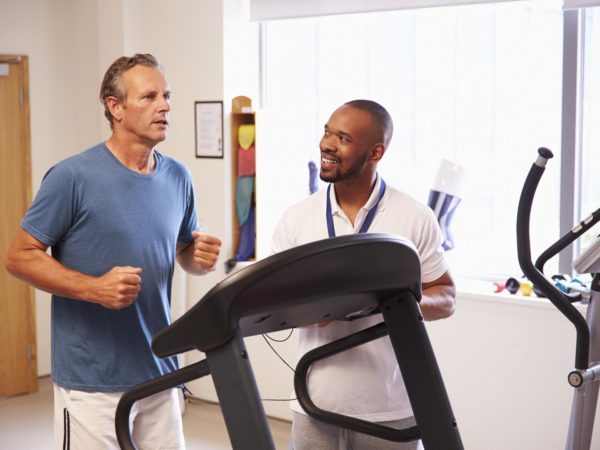Do You Need A Fitness Checkup?
I’ve heard it is important to have an annual fitness checkup. What would this involve?
Andrew Weil, M.D. | March 17, 2017

The idea that we all need a fitness checkup comes from a scientific advisory group, which the American Heart Association asked to consider how much of a role aerobic fitness plays in our heart health and lifespan. The AHA also wanted to know whether there’s an inexpensive and accurate way for doctors to determine a patient’s fitness without recommending that everyone have a cardiac stress (treadmill) test.
The advisory group concluded that aerobic (cardiovascular) fitness can better indicate the risk of heart disease than smoking, obesity and high blood pressure. If you are not as fit as you should be, ideally your physician would begin by recommending more aerobic exercise. For the record, that means any activity that increases your heart rate and respiratory rate, the kind that feels like work and makes you huff, puff, and sweat. It includes running, some kinds of walking, cycling, swimming, cross-country skiing, jumping rope, dancing, and climbing stairs.
Aerobic exercise conditions our heart and arteries and respiratory system. It increases the flow of blood and oxygen to all organs, enabling them to work more efficiently. It burns calories, strengthens the immune system, reduces stress, lowers serum cholesterol and tones the nervous system.
In its statement, the AHA advisory committee said that aerobic fitness should be included among the vital signs physicians use to detect and monitor medical problems. The others are blood pressure, body temperature, pulse and breathing rate.
The panel also made the point that the greatest health benefits of aerobic exercise seen occur between the least fit and the next least fit group of individuals, adding “one need not be athletic to gain substantial health benefits from improvements in cardiorespiratory fitness.”
Ideally, aerobic fitness would be assessed by means of a treadmill test, but knowing that isn’t practical, the advisory panel suggested that doctors could input information about individual patients into computerized formulas that provide valid estimates of cardiorespiratory fitness. (However, patients at high risk of heart disease still need a treadmill test.)
If your doctor doesn’t provide a fitness checkup, you can calculate your own cardiovascular fitness using online sites such as the World Fitness Level or The Norwegian University of Science and Technology’s fitness calculator. Be sure to discuss the results at your next doctor’s appointment. If they’re not optimal or are below your expectations, you can improve them – all it takes is more exercise. Work out longer or with more intensity or both and then recalculate.
Andrew Weil, M.D.
Source:
AMA Scientific Statement, “Importance of Assessing Cardiorespiratory Fitness in Clinical Practice: A Case for Fitness as a Clinical Vital Sign.” Circulation, November 21, 2016, https://doi.org/10.1161/CIR.0000000000000461










